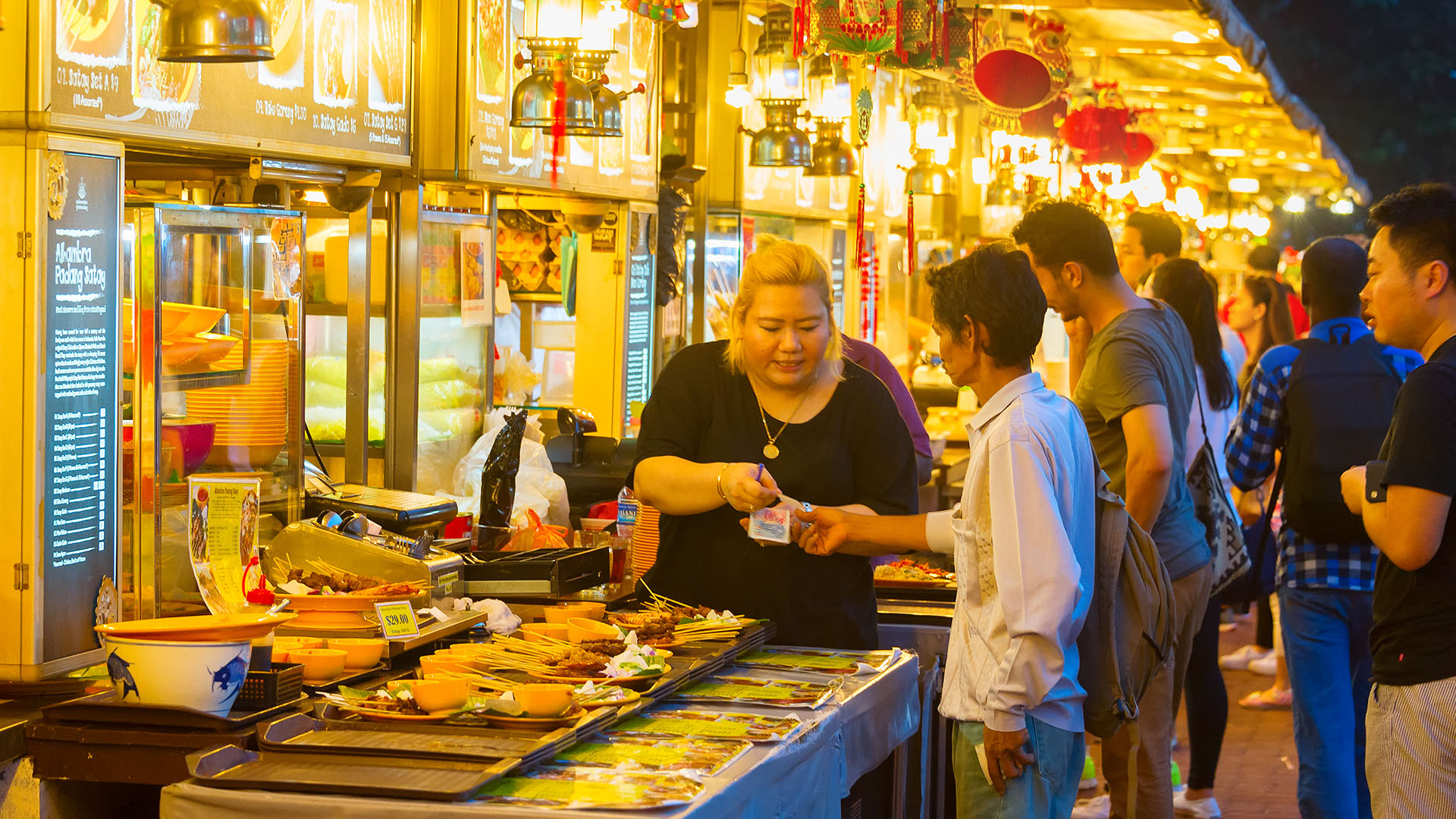In Singapore, the symbol “++” is commonly seen after the prices displayed in restaurants, hotels, and other service businesses. This symbol signifies that the displayed price does not yet include the Goods and Services Tax (GST) and the service charge. The GST in Singapore currently stands at 8%, while the service charge is usually 10%. As such, customers need to factor in these additional charges to the net price to determine the final amount they will be paying.
This method of presenting prices with the “++” symbol helps businesses maintain transparency with their customers, ensuring that they are aware of the additional charges that will be levied on top of the listed prices. In many cases, this practice is widely expected by both locals and tourists in Singapore, as it is prevalent across various sectors such as food and dining, accommodation, and even academic and business settings.
Key Takeaways
- The “++” symbol in Singapore indicates that additional GST and service charge need to be added to the displayed price.
- This pricing method is commonly used in restaurants, hotels, and other service businesses in Singapore.
- The use of “++” promotes transparency in pricing, ensuring customers are aware of the additional charges they will incur.
Origin and Influence of ++
In Singapore, the symbol “++” has a unique meaning, often used in informal contexts such as messaging or casual conversations. Its origin and influence can be traced back to the fascinating linguistic environment of Singapore, where multiple languages and dialects interact.
The rich multicultural heritage of Singapore is reflected in Singlish, an English-based Creole language spoken by many Singaporeans. This vibrant and unique language has roots in various languages like Hokkien, Malay, Teochew, Cantonese, Tamil, and Mandarin. The continuous language contact among speakers of these different languages led to the emergence of Singlish as a colloquial mode of communication in the country 1.
The “++” symbol is commonly used in Singapore to indicate “and more” or “extra”, typically in the context of food orders or services. This notion of adding more is not unique to Singapore but has been influenced by the local linguistic landscape. The diverse mix of languages, including English, has contributed to the incorporation of the “++” symbol into everyday Singlish vocabulary 2.
The multiculturalism of Singapore’s society continues to shape the evolution of Singlish. As new generations and global influences come into play, it is expected that Singlish and symbols like “++” will adapt and transform according to contemporary contexts. In this dynamic linguistic environment, the “++” symbol serves as a testament to the unique blend of cultures and languages found in Singapore 3.
Footnotes
++ in Everyday Conversation
Meaning and Use in Various Contexts
In Singapore, the term “++” is commonly used in everyday conversation to indicate an additional or incremental charge. This symbol is often used in the context of prices, services or requests where there is an extra cost involved. For example, if the base price of an item is S$10, and the shop imposes a 7% GST, the total cost will be S$10++, which means the final price the customer needs to pay is S$10.70. The symbol acts as a short-form and a convenient representation of such additional charges.
++ in the Business and Academic World
In Singapore, the “++” symbol is commonly used in various contexts, including business and academia. It signifies an addition or increment, often relating to costs, grading systems, or point systems. In the business world, “++” is primarily used to denote additional charges, such as service fees or taxes, on top of the original price. For example, a restaurant bill may list the total cost as “S$50++,” indicating that additional charges will be applied.
In the academic sector, “++” is used in some institutions to denote a higher grade or increased academic performance. For example, at Singapore Management University, a GPA of 4.0 is honored with Summa Cum Laude, while a grade of “A++” may be awarded for exceptional work.
In addition to these common uses, “++” may appear in several other Singapore-specific abbreviations or terms:
- SP: Singapore Polytechnic, designated as an abbreviation of SP++
- AG: Accumulative Grade, often represented as AG++
- CCA: Co-Curricular Activities, where students’ achievements may be recognized as CCA++
- NTU: Nanyang Technological University, known for its grading system using the “++” notation
- 4D: a popular lottery game in Singapore, where the jackpot can be represented as 4D++
It’s essential to understand the context in which “++” is being used to discern its meaning accurately. Singapore’s diverse culture and business environment have given rise to a variety of abbreviations and terms. Being familiar with these terms helps to navigate the city-state’s academic and business landscape with ease and confidence.
Overall, the “++” symbol in Singapore carries different meanings in various contexts, and understanding its usage aids in better communication and comprehension within the country’s business and academic spheres.
++ in Food and Dining
In Singapore, the symbol “++” is commonly used in the food and dining industry, particularly on menus and price listings at eateries and restaurants. It indicates that the listed prices are subject to additional charges, such as Goods and Services Tax (GST) and service charge.
Use in Eateries and Restaurants
When you see a price followed by “++” in a Singaporean eatery or restaurant, it means that the final amount payable will be higher than the displayed price. The “++” represents extra fees that will be added to the bill. These fees usually consist of a 7% GST and a 10% service charge. For example, if a dish is listed as $10++, the total cost would be $11.70, including the GST and service charge.
It is important to note that not all dining establishments in Singapore apply the “++” charges. In most hawker centres, food courts, and takeaway outlets, the prices are often displayed as nett, meaning the GST and service charges are already included in the listed price. In such cases, you will find the term “nett” mentioned alongside the price.
When visiting a restaurant or eatery in Singapore, it is also common to experience the “tissue packet” practice. You may notice that patrons place tissue packets on tables to reserve their seats, especially during peak hours at popular hawker centres. This informal tissue packet system is colloquially known as “chope” and is a local custom that visitors should be mindful of.
In conclusion, the “++” symbol in Singapore’s food and dining scene indicates added charges in the form of GST and service fees. Being aware of their meaning and the customs of the local dining culture will enhance your overall experience and appreciation for Singapore’s diverse culinary offerings.
Misconceptions about ++
In Singapore, there are a few misconceptions surrounding the use of “++” in various contexts like prices in a pie shop, pub, or any establishment. In this section, we will discuss these misconceptions and common mistakes related to the misunderstanding of “++”.
Common Mistakes and Misuse
One common misconception is that “++” represents an element of excitement or added value for a product or service. For example, some individuals may interpret “++” as an indication of an exciting new flavour in a pie, or a special promotion in a pub. However, this is not correct.
In reality, “++” usually refers to additional charges or fees, specifically, taxes and service charges that need to be added to the listed price. The “++” denotes that the price displayed does not include these extra charges, and the actual cost will be higher than the listed amount. This can lead to confusion and disappointment for customers who may feel misled by the pricing.
Another common mistake is the assumption that the rate of taxes and service charges are uniform across all establishments. Some consumers may believe that a specific percentage, such as 10% for service charge and 7% for Goods and Services Tax (GST), is always applicable whenever “++” is used. However, this is not necessarily true, as the rates may vary depending on the establishment’s policies and location.
In conclusion, understanding the meaning and implications of “++” in Singapore is crucial for consumers to make informed decisions and avoid misconceptions. By reading this section, we hope readers can confidently interpret “++” and its significance in various contexts.
Conclusion
In Singapore, the “++” symbol is commonly found at restaurants and hotels, representing the additional charges beyond the displayed price. These extra charges consist of the Goods and Services Tax (GST) at 7%, and the service charge, typically at 10%.
This practice enables businesses to display a lower base price, but customers should be aware of the extra charges they will incur. It is essential for consumers to take note of these charges and factor them into their final expenses when dining or staying in Singapore.
Overall, understanding the meaning of “++” and its implications on the final cost can help consumers make informed decisions and avoid surprises when it comes time to pay their bills.
Frequently Asked Questions
What is the significance of ++ in pricing?
++ in Singapore refers to the addition of Goods and Services Tax (GST) and service charge to the listed price of items, particularly in establishments such as restaurants and hotels. These additional charges are typically applied to the subtotal before a final price is determined.
How do I calculate GST and service charge?
To calculate GST and service charge, you first need to know their respective percentages. In Singapore, the current GST rate is 7%. The service charge varies between establishments but is typically around 10%. To compute the total amount, add the GST and service charge percentages to 100% and multiply the subtotal by the resulting percentage. For example, if your bill is SGD 100, the total with ++ would be SGD 100 x 1.17 (assuming a 10% service charge) = SGD 117.
Is ++ included in nett price?
No, the nett price refers to the final amount payable, inclusive of GST and service charge (if applicable). It is essential to distinguish between the two as some establishments may list prices exclusive of these additional charges, while others may display nett prices.
How does ++ affect restaurant bills?
In restaurants, the ++ affects the total amount billed to customers, as it increases the cost due to the added GST and service charge. The final bill will be higher than the sum of the listed menu prices, which may sometimes lead to confusion or surprise for those unaccustomed to the system.
Are all establishments required to charge ++?
Not all establishments are required to charge ++. While GST is a mandatory tax in Singapore, the service charge is optional and depends on the establishment’s policy. Some establishments may choose not to impose a service charge, while others may include it in their pricing structure.
What is the difference between nett price and ++?
The primary difference between nett price and ++ lies in the inclusion of the additional charges. The nett price is the final amount payable by the customer after accounting for GST and service charge, whereas the ++ denotes the added charges that are yet to be combined with the base price to determine the final amount payable.




